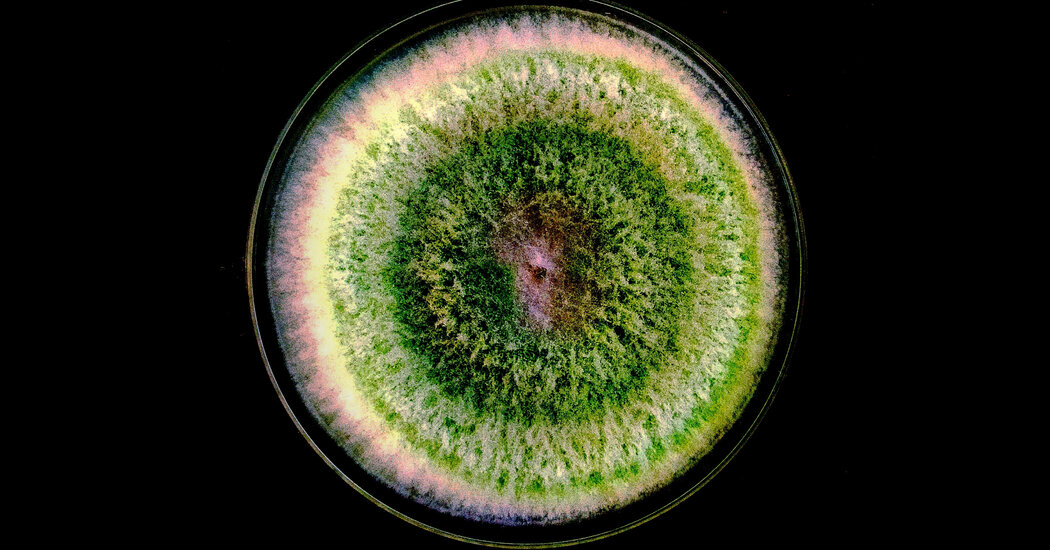The discovery that sound improves the growth rate of beneficial fungus suggests that dirges in the dirt may help restore forests.
The soil beneath our feet, home to fungi, bacteria, beetles and worms, may not seem like the most jazzy environment. But if you stuck a powerful enough microphone in the soil, you’d be surprised at how hopping it is, acoustically speaking. That has led some microbiologists to wonder: Are there sounds that actually encourage microorganisms to grow? And could serenading a fungus make it twist and shout?
The answer, published in a study on Wednesday in the journal Biology Letters, is yes. Playing sound to Trichoderma harzianum, a green microscopic fungus that defends tree roots from pathogens, led to growth rates seven times as fast as those of fungus grown in the sound of silence. If the laboratory findings can be replicated in nature, then sound could be an unexpected new tool for improving the health of forests, encouraging beneficial microbes to take root and thrive.
In recent years, scientists have put microphones in environments of all kinds, including tropical trees and coral reefs. In the process, they have discovered that an environment’s sound can be linked to its biodiversity — often, the more complex the soundscape, the more diverse and healthy the inhabitants.
Research also shows that playing the sounds of intact ecosystems can help damaged ones recover. Off the coast of Adelaide, Australia, for instance, scientists found that the recorded sounds of healthy oyster reefs could lure new oyster larvae to areas destroyed by overfishing.
Sound also seems to help some bacteria grow, said Jake Robinson, a microbial ecologist at Flinders University in Australia who studies the soil microbiome. It was this work with bacteria that inspired Dr. Robinson and his colleagues to see if the same were true of a beneficial fungus.
First, the scientists lined big plastic tubs with soundproofing foam to make quiet places for their fungi to live in. Then they put petri dishes with a dab of T. harzianum in the tubs. Once a day, they played some of the dishes 30 minutes of white noise drawn from a YouTube video intended to help people with tinnitus.
